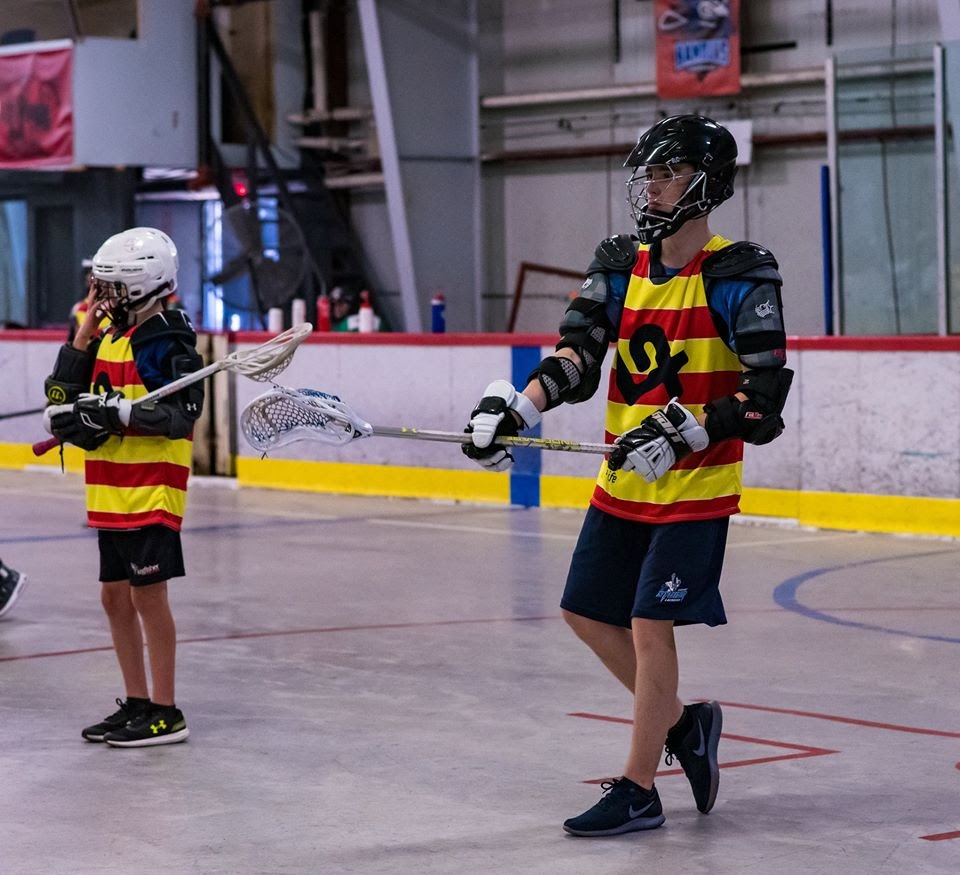Box Lacrosse: Special Teams
“Special Teams” are a group of players designated to perform certain duties during certain situations in the game. Power-play and short-handed are two of the most notable “special teams” used during the game due to their frequency, but other special teams include: “Face-Off/Loose Ball Team,” “Last Minute Defense/Offense" units, and the Ball Back/Rag Teams.
Beginner Lacrosse Drills: Goaltending
Goaltending is a crucial element to any lacrosse team and is by far and away the most unique position in lacrosse. Goaltenders are the last line of defence and depending on the outcome of the game, can be hailed as heroes or scapegoats. As such, It is important for a coach to understand, teach and reinforce the fundamentals of goaltending and incorporate them into drills in practice, at all times. Solid goaltending incorporates a certain mixture of fearlessness, sound technique and athleticism, to help prevent opposing teams from scoring.

Beginner Lacrosse Drills: Motion Offense
Upon transitioning the ball from defense to offense teams will get into the phase of the game known as their set-offense, otherwise known as their offensive system. For beginners (8-16 year olds), this is a very simple set of goals/objectives on offense (different for each age group), usually taught within the framework of the “motion offense,” which is the most basic offensive system and ultimately the focus of this blog.
Beginner Lacrosse Drills: Shooting
There are 2 styles of shot in lacrosse: shooting-on-the-run (which is the most frequent) & set-shooting (which is the focus of this article). Using a basketball analogy, for a set-shot think Steph Curry with his feet set, perfect balance, dropping a bomb from long range with perfect form. For a shot-on-the-run, picture Michael Jordan or Kobe Bryant slashing to the net and pulling up for an off-balance jump shot.
Beginner Lacrosse Drills: Dodging (Ball Protection)
Once basic ball protection has been covered off in both static and dynamic fashion (as seen in our Basic Practice Plans), the next step is to “make moves” to get around defenders, learning how to change directions and change speeds while manipulating the lacrosse stick.
Beginner Lacrosse Drills: Loose Balls
Assuming the basics of scooping through the ball, trapping & scooping, “scoop-tuck & turn,” and “scoop to triple-threat” have been covered off in both static and dynamic fashion (as seen in our “Basic Practice Plans,” the next step is to start preparing players to get loose balls in traffic (against an opponent). Little nuances such as boxing out, “keeping it alive” for a teammate to come in and scoop it, other times poking at, kicking or batting the ball to gain an advantage, all come into play; all of which are worthy of drills in and of themselves!
Beginner Lacrosse Drills: Basic Defense
Outside of the fundamental footwork described in our FREE "Fundamental Lacrosse Practices," landmarking the top-shoulder of your check (the person you are covering defensively) while in a "closed stance," is the proper defensive technique when checking a player on the ball-side of the defense.
Beginner Lacrosse Drills: Don’t Start With Passing & Catching!
The fundamentals of lacrosse include: Basic Defense, Scooping (Loose Balls), Cradling/Ball Protection, Basic Transition, Passing, Catching, Shooting & Basic Offense (appearing hypothetically in that order). You play good defense, knock the ball loose, pick it up, protect it and/or cradle it forward, pass the ball to any open players ahead of you, catch the pass and then shoot it if you are undefended and in the middle of the defense; otherwise creating a shot with basic offensive maneuvers.
Beginner Lacrosse Drills: Warm-Up Drills & Shuttles
A Dynamic Warm-Up is a fundamental element of any physical activity, often beginning with a series of basic calisthenics (body weight activities) used to get the blood moving (break a sweat) and joints lubricated.

Laxlife Blog #1: Fundamental Practice Plans
"Are you frustrated with the lack of coherent lacrosse information available on the internet? Don't waste your time practicing with disconnected practice plans that lack purpose and progression (The WHY + The HOW). Use the Laxlife tried, tested and true, practice plans which are evidence-based, with skills and drills horizontally integrated (evenly balanced) across several practices, to ensure that skills are developed efficiently and effectively"
